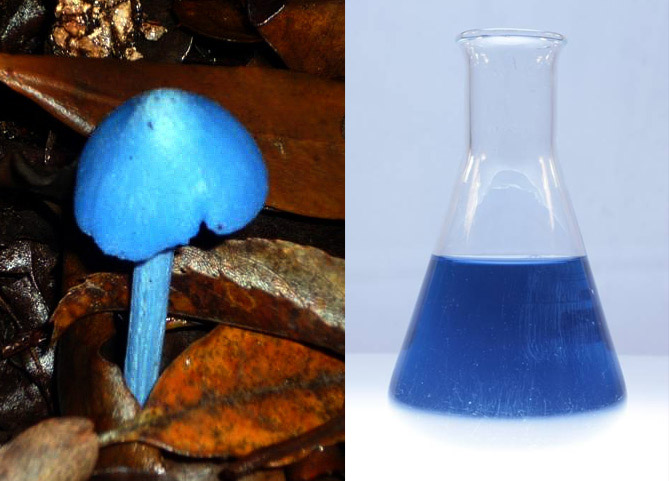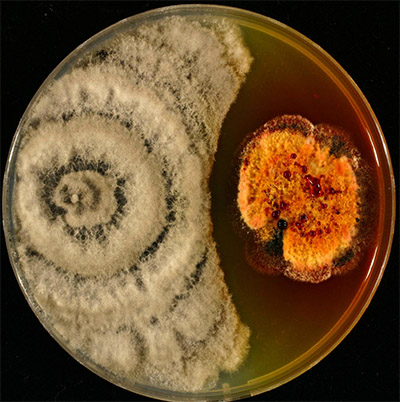Research areas
Use the arrows to navigate through research areas in the Metabolomics Lab
Microbe-Derived Pigments
Due to consumer demand, food manufacturers worldwide are moving to produce more natural colours, in an effort to replace potentially harmful artificial colourings now used in many foods and beverages.
The aim of this research has been the screening of pigment-producing microbes from New Zealand environment to select those presenting potential for production of food-grade colorants. Our selection has been based on the microorganisms (e.g. bacteria, fungi and microalgae) producing pigment molecules that fit current market demands for specific colour shades and pigment chemical properties.
We have so far screened 286 pigment-producing microbial strains isolated in New Zealand. Among those, we have tested the stability to light, temperature and pH of 121 pigment extracts. A total of 43 microbial strains have been short-listed based on the chemical properties and colour-shades of their pigments. Molecular identification of the selected strains using ribosomal DNA sequencing showed the presence of 12 undetermined genera and 31 known genera including 37 bacteria, 5 fungi and 1 microalga.
Bioactive Microbial Metabolites
Fungi are a very diverse group of organisms. They include the moulds which attack plants and plant products, and are a major problem due to the agricultural damage and food spoilage they cause. Fungi are also a source of diverse bioactive molecules with potential biotechnology applications.
We have discovered a novel natural fungicide, which is derived from a fungus. This fungicide is highly specific and effective against many strains of disease-causing filamentous fungi. The chemical structure and properties of this fungicide have been characterised in the laboratory, showing it has a low degree of toxicity, is water and alcohol soluble, and is biodegradable.
The fungicide has been licensed for use in the horticulture industry, and there is significant potential for its use in the food technology and pharmaceutical industries.
Bioconversion of Food By-products
Food by-products can be converted to products that are of high value in the food and fragrance industry, including new food products or natural aromatic compounds.
Ninna Granucci is investigating a bioconversion fermentation process for fruit residues developed at laboratory scale, while adapting the technology to the needs (and opportunities) of New Zealand primary industries.
Melodie Lindsay is investigating the use of different microorganisms to produce natural fragrance and flavour additives from primary industry waste products as part of a wider initiative to add value to New Zealand biological resources with the Bioresource Processing Alliance.
Effect of Sound on Living Organisms
Using metabolomics and shake-flask cultivations under identical growth conditions, we have compared the physiology of Saccharomyces cerevisiae cells growing in the presence of music, high frequency and low frequency sound waves and cells grown in the silence. All sound stimuli tested not only increased significantly the growth rate of yeast cells but they also reduced biomass yields.
Therefore, our results clearly demonstrate that sound does affect cell metabolism, which opens an entirely new perspective for scientific investigation interfacing acoustics, biophysics and biochemistry.
If we understand how sound affect cell metabolism and which metabolic pathways are affected by specific sound frequencies we may be able in the future to use sound waves to control cell growth and physiology, increase product yield, inhibit co-product formation and improve productivity of industrial fermentations.



